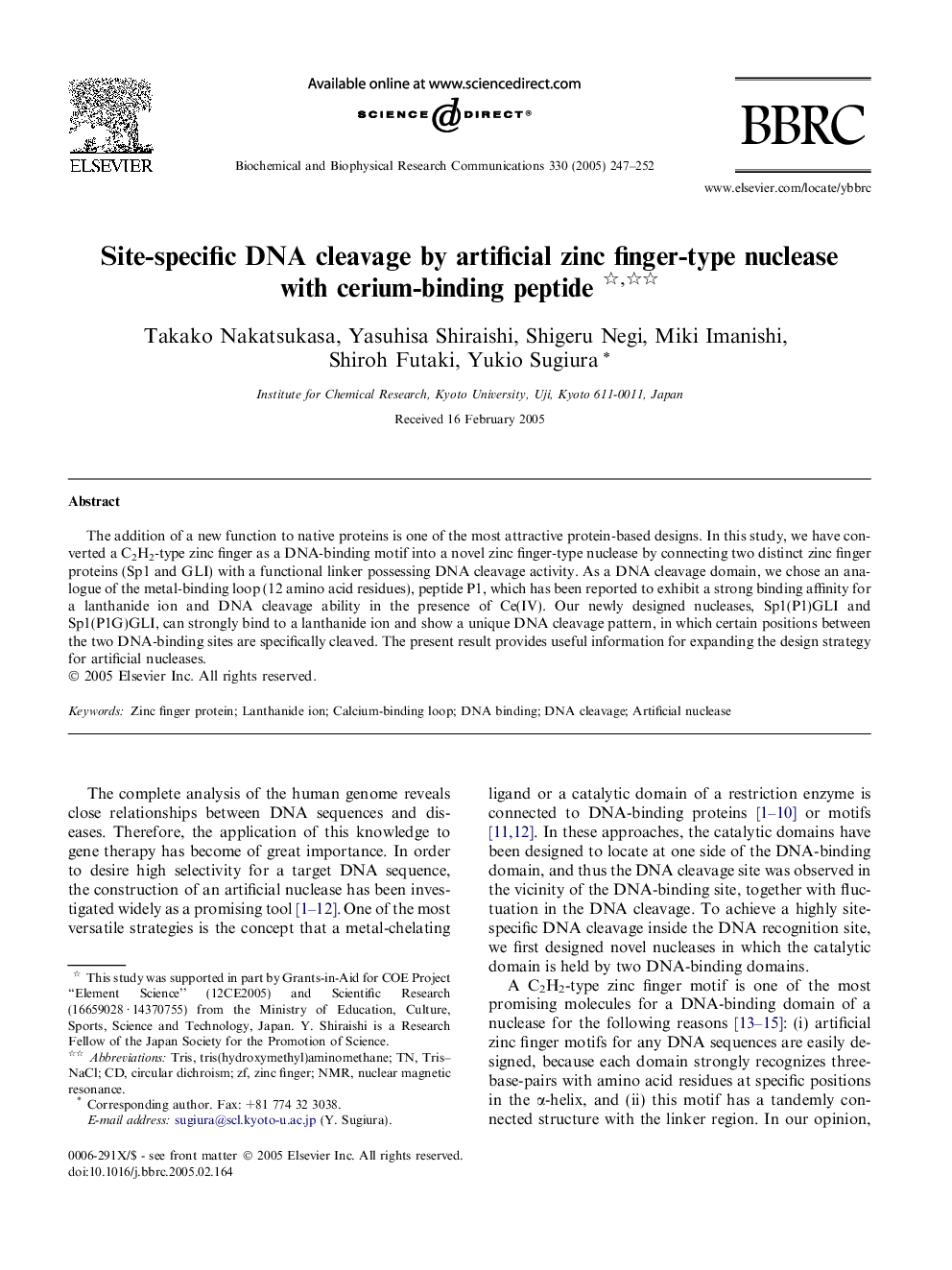| Article ID | Journal | Published Year | Pages | File Type |
|---|---|---|---|---|
| 10770881 | Biochemical and Biophysical Research Communications | 2005 | 6 Pages |
Abstract
The addition of a new function to native proteins is one of the most attractive protein-based designs. In this study, we have converted a C2H2-type zinc finger as a DNA-binding motif into a novel zinc finger-type nuclease by connecting two distinct zinc finger proteins (Sp1 and GLI) with a functional linker possessing DNA cleavage activity. As a DNA cleavage domain, we chose an analogue of the metal-binding loop (12 amino acid residues), peptide P1, which has been reported to exhibit a strong binding affinity for a lanthanide ion and DNA cleavage ability in the presence of Ce(IV). Our newly designed nucleases, Sp1(P1)GLI and Sp1(P1G)GLI, can strongly bind to a lanthanide ion and show a unique DNA cleavage pattern, in which certain positions between the two DNA-binding sites are specifically cleaved. The present result provides useful information for expanding the design strategy for artificial nucleases.
Related Topics
Life Sciences
Biochemistry, Genetics and Molecular Biology
Biochemistry
Authors
Takako Nakatsukasa, Yasuhisa Shiraishi, Shigeru Negi, Miki Imanishi, Shiroh Futaki, Yukio Sugiura,
